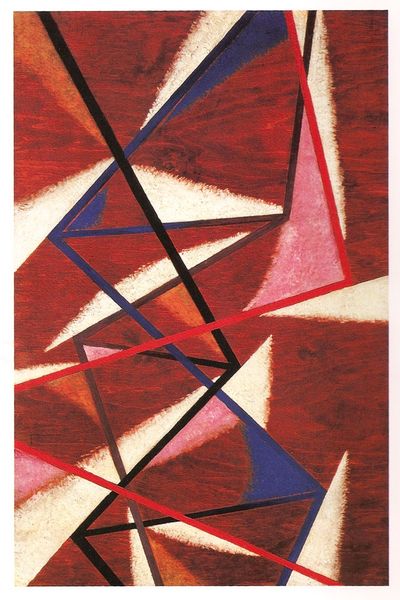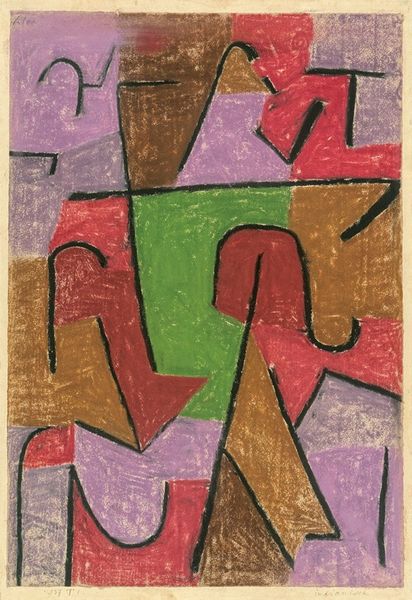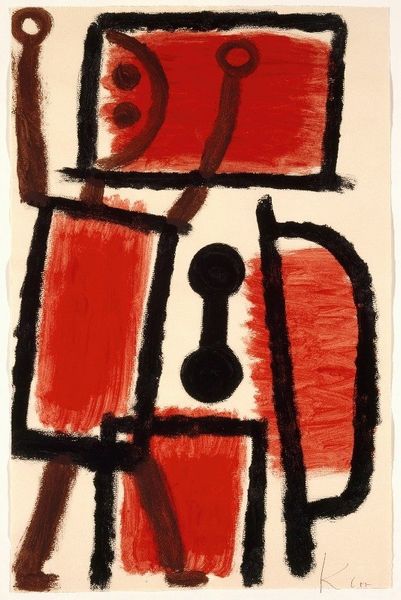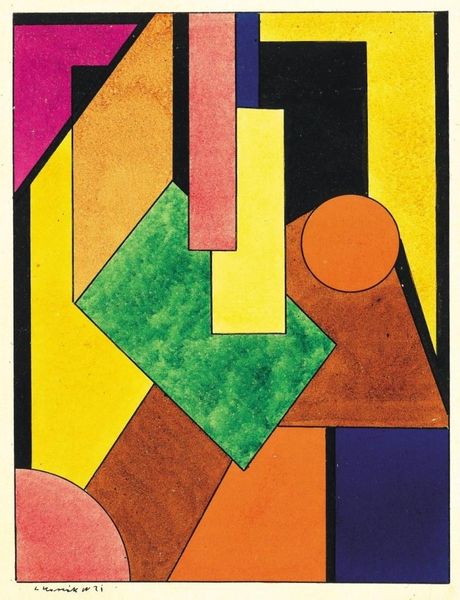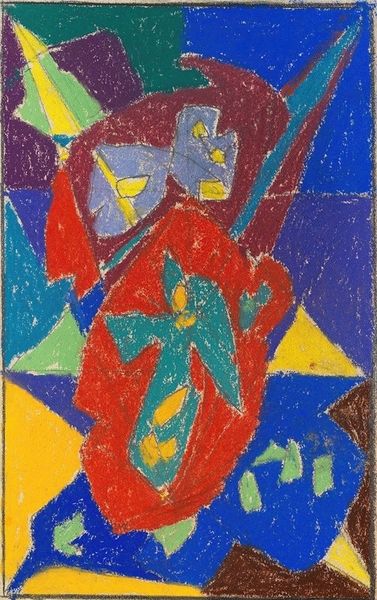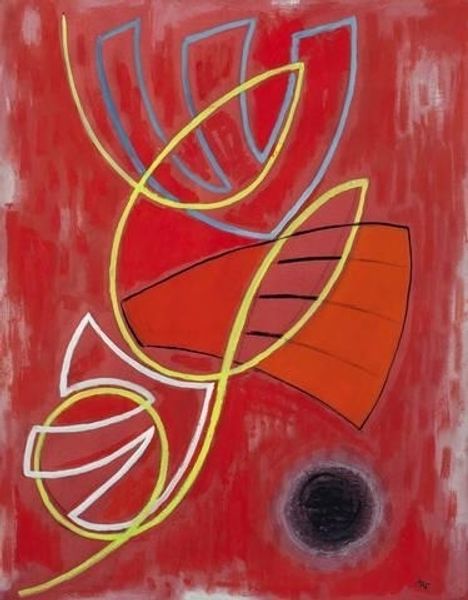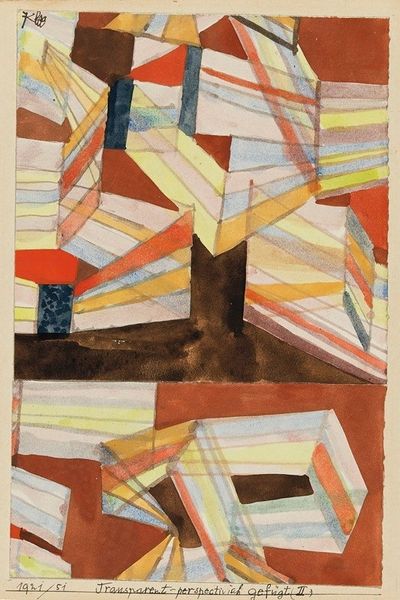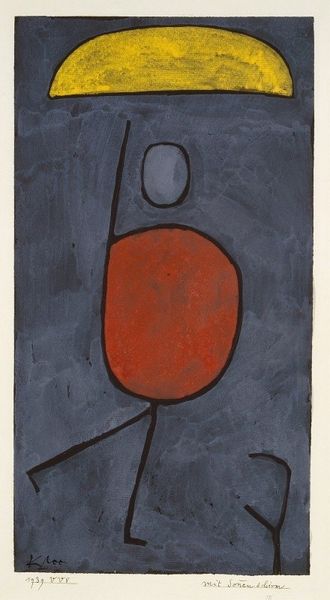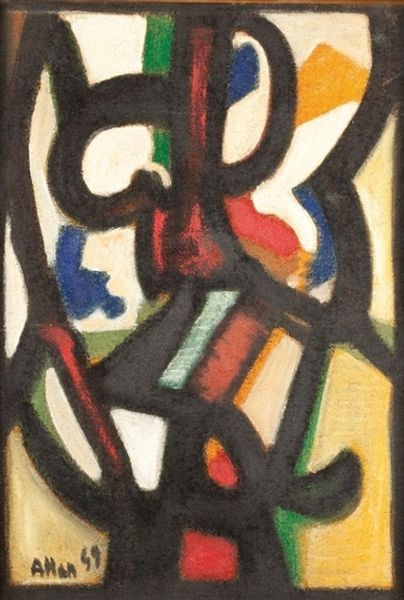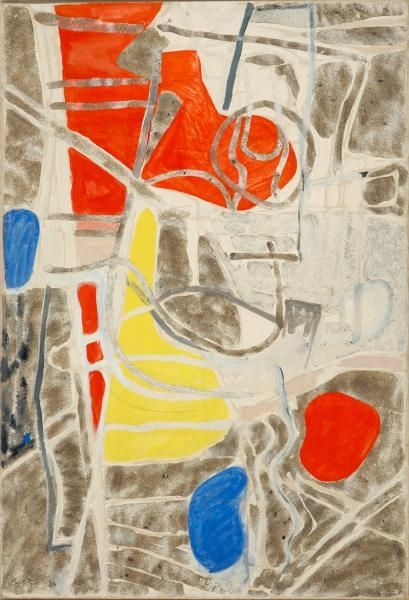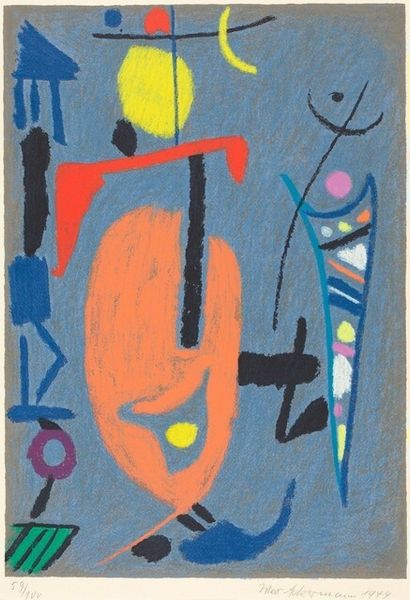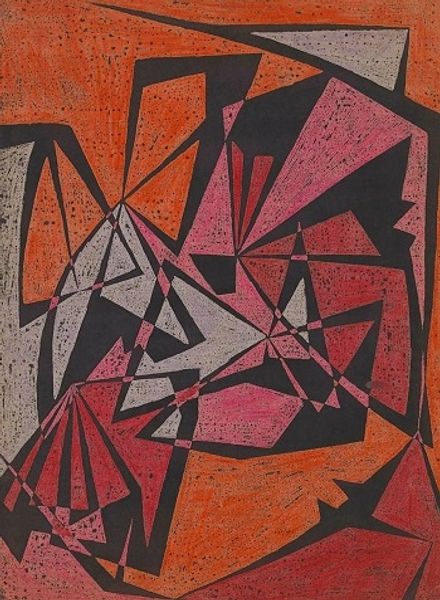
Copyright: Public Domain: Artvee
Editor: This is "Mannequin," a watercolor painting from 1940 by Paul Klee. There's a kind of melancholic quality to it, with these muted orange and brown tones and these strange geometric shapes. It reminds me of a sort of abstract figure. What do you see in this piece? Curator: This is Klee exploring the symbolic potential of form. Look at how he presents a 'mannequin' not as a perfect representation but a collection of signs – circle for the head, triangles possibly indicating torso, limbs, and facial features merely suggested. Consider the historical context: 1940. What societal anxieties, fears of dehumanization, and mass production could be embedded in this portrayal of the human form reduced to geometric essence? Editor: So the simplicity isn't just abstract, it's meant to communicate something about society at that time? Curator: Exactly. Klee often drew on personal experience and wider cultural currents. These shapes might reflect anxieties of a world moving toward war and alienation. Notice that floating red circle – an echo of a soul, or a sign of missing identity, severed from its anchor? The colors and geometric abstraction serve as potent carriers of these emotional and psychological realities. How does that change your interpretation? Editor: It adds another layer, thinking of it as a representation of feeling lost, like a stripped-down version of a person during a difficult time. Curator: And those dark outlines further emphasize the fractured, compartmentalized nature of the figure. He provides not a body but an empty form – a shell reflecting deeper existential inquiries. Considering this symbolism, it invites a powerful and relevant dialogue on the long echoes of personal identity within the machine of the 20th Century. Editor: I had never thought about it that way! Now I see so much more depth and can appreciate the visual language to understand it's historical reflection. Curator: The brilliance lies in Klee’s ability to load deceptively simple forms with multifaceted historical, social and emotional meaning, still affecting our reading of the work.
Comments
No comments
Be the first to comment and join the conversation on the ultimate creative platform.
